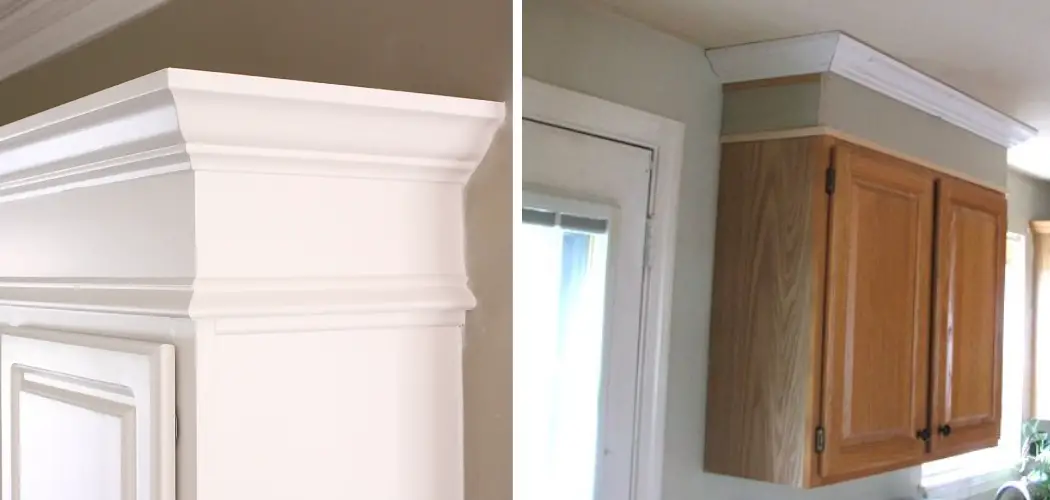When you’re not satisfied with the height of your kitchen cabinets, you may be wondering what can be done to make them taller. Fortunately, there are several options available that can help you achieve the desired height and give your kitchen a new look.
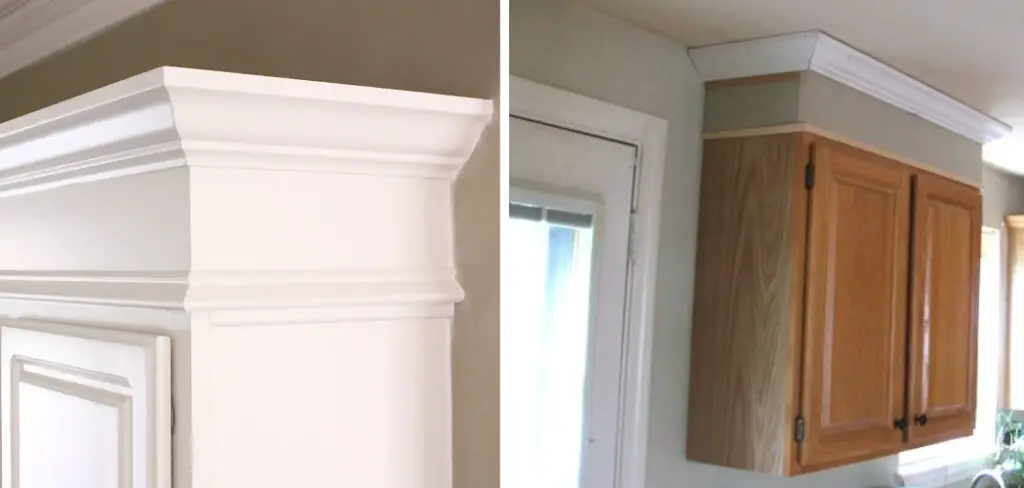
In this guide on how to make kitchen cabinets taller, we’ll go through the steps necessary to make your kitchen cabinets taller.
Materials and Tools Needed
- Measuring tape
- Screwdriver
- Wood filler
- Sandpaper
- Paint or stain (optional)
- Lumber in desired height and width
- Saw (circular saw or table saw)
- Nails or screws
- Drill
12 Options on How to Make Kitchen Cabinets Taller
Option 1: Installing New Cabinet Doors
One way to increase the height of your existing cabinets is by installing new cabinet doors. This is a simple and cost-effective solution that can instantly make your cabinets look taller. And if you choose to paint or stain your new doors, it can also give your kitchen a fresh and updated look.
Option 2: Building a Riser
A riser is essentially a platform that sits on top of your existing cabinets, adding extra height. This is an ideal option for those who want to keep their current cabinet doors and don’t want to make any major structural changes.
To make a riser, you’ll need to measure the dimensions of your cabinets and cut lumber accordingly. Then, attach the lumber pieces together using nails or screws and place them on top of your cabinets.
Option 3: Using Crown Molding
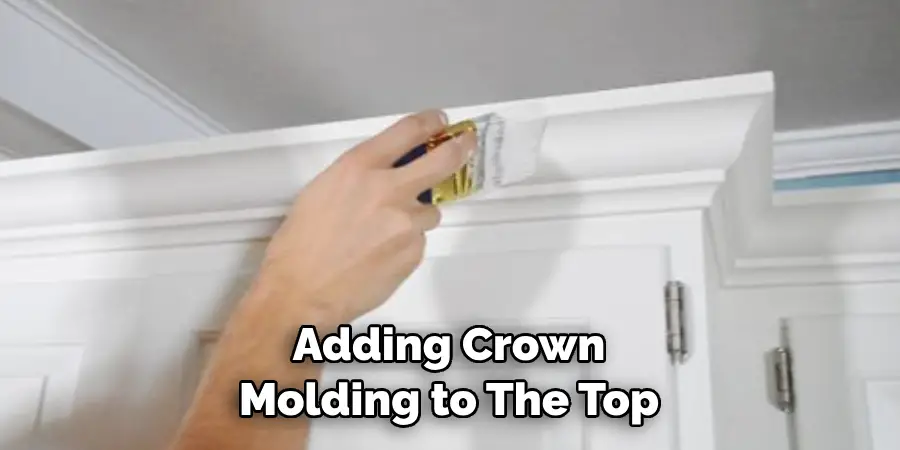
Adding crown molding to the top of your kitchen cabinets is another great way to give them a taller appearance. This is a budget-friendly option that can make a big impact on the overall look of your kitchen.
To install crown molding, measure and cut it to fit the length of your cabinet tops, then use nails or screws to secure it in place.
Option 4: Extending Cabinet Legs
If your cabinets have legs at the bottom, you can extend them to add extra height. This is a simple and cost-effective option that doesn’t require any major changes to your cabinets. Simply unscrew the existing legs, add extensions to them, and screw them back in place.
Option 5: Raising the Cabinets
If you have enough space between your cabinets and ceiling, you can raise the cabinets themselves to make them taller. To do this, you’ll need to unscrew the cabinets from the wall, add extensions to the bottom, and then reattach them at the desired height.
Option 6: Building a Shelf Above Cabinets
Another way to create more height in your kitchen cabinets is by adding a shelf on top of them. This can provide extra storage space while also making your cabinets appear taller. You can either build a shelf using lumber or use pre-made shelves from a home improvement store.
Option 7: Installing Cabinet Height Extenders
Cabinet height extenders are specially designed pieces that can be attached to the top of your cabinets to add extra height. They come in various sizes and can blend seamlessly with your existing cabinetry. This is a simple and quick solution that doesn’t require any major modifications.
Option 8: Adding Decorative Legs or Feet
Similar to extending cabinet legs, adding decorative legs or feet can also give your cabinets a taller appearance. These pieces can be found at home improvement stores and come in various styles to match your existing cabinets. Simply attach them to the bottom of your cabinets for an instant height boost.
Option 9: Installing Fillers

Fillers are narrow strips of wood that can be placed between your cabinets and the wall. By adding fillers, you can create the illusion of taller cabinets while also closing any gaps between the cabinets and walls. These can be easily cut to fit using a saw and attached with nails or screws.
Option 10: Repositioning Your Cabinets
If you have multiple cabinets in your kitchen, you can try repositioning them to create a stacked effect. By stacking smaller cabinets on top of larger ones, you can achieve the desired height while also creating a unique look. Just make sure to properly secure the cabinets together for safety.
Option 11: Replacing Cabinet Boxes
If your current cabinet boxes are damaged or outdated, replacing them with taller ones is a great option. This may require more time and effort, but it can give your kitchen a completely new look. Make sure to carefully measure and cut the new cabinets to fit in your existing space.
Option 12: Hiring a Professional
If DIY options seem too daunting or you want a more customized solution, it’s best to consult with a professional. They can assess your kitchen and provide expert advice on the best way to make your cabinets taller. They can also handle all the necessary measurements, cutting, and installation for you.
No matter your budget or skill level, there are several options available to make your kitchen cabinets taller.
From simple DIY solutions to hiring a professional, you can easily achieve a taller and more functional kitchen.
With the right materials and tools, your cabinets will not only look taller but also give your kitchen an updated and refreshed look. So don’t settle for cabinets that are too short – try out these options and give your kitchen the upgrade it deserves!
9 Safety Measures to Keep in Mind
1. Wear Protective Gear
Always wear safety glasses and gloves when working with power tools or handling sharp objects. This will protect your eyes and hands from potential injuries. But even with protective gear, it’s important to handle tools and materials carefully.
2. Use a Drill instead of a Hammer

When attaching pieces together, it’s safer and more efficient to use a drill instead of a hammer. This will help prevent injuries from missed nails or screws. Make sure to also use the appropriate sized bit for your drill when making holes.
3. Work in a Well-Ventilated Area
When using paints, stains, or other chemical products, make sure to work in a well-ventilated area. This will prevent inhaling harmful fumes and ensure your safety while working. Some products also recommend wearing a mask for added protection.
4. Keep Children and Pets Away
When working on your cabinets, it’s important to keep children and pets away from the work area. They may accidentally touch tools or materials or get in the way of your work, leading to potential accidents. It’s best to wait until they are not around before starting any DIY projects.
5. Secure Ladders and Step Stools
If you need to use a ladder or step stool to reach high areas, make sure they are securely placed on the ground and can support your weight. It’s also important to have someone hold the base of the ladder for added stability. Never stand on furniture or other unstable objects to reach high areas.
6. Use Proper Lifting Techniques
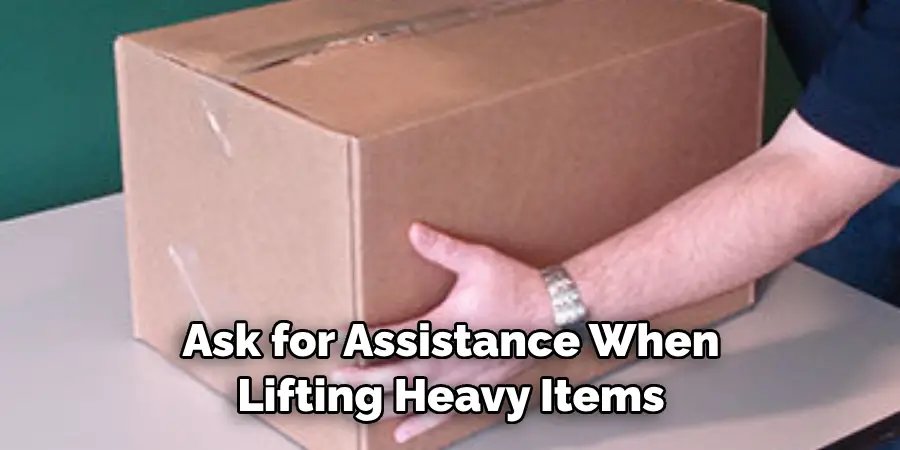
Always use proper lifting techniques to prevent strain or injury when moving heavy cabinets or materials. Bend your knees and lift with your legs instead of your back. If necessary, ask for assistance when lifting heavy items.
7. Read and Follow Instructions
Whether you’re using power tools, chemicals, or new materials, always read and follow the manufacturer’s instructions carefully. This will ensure your safety and prevent any accidents or mistakes.
8. Keep the Work Area Clean
To prevent tripping hazards, make sure to keep your work area clean and organized. This includes clearing away tools and materials after use, as well as wiping up any spills or debris from surfaces. Even small objects on the floor can cause accidents.
9. Take Breaks and Stay Hydrated
DIY projects can be physically demanding, so it’s important to take breaks and stay hydrated while working. This will help prevent exhaustion or dehydration, which can lead to accidents. Make sure to also rest if you feel tired or lightheaded while working.
Safety should always be a top priority when undertaking any DIY project, so keep these measures in mind to ensure a safe and successful cabinet height extension.
So go ahead and give your kitchen cabinets the extra height they need – just remember to prioritize safety along the way! Keep these tips on how to make kitchen cabinets taller in mind and enjoy your beautiful new cabinets with confidence.
8 Things to Avoid
While there are many safe and effective ways to make your kitchen cabinets taller, you should also avoid some things. Here are eight things to keep in mind when extending the height of your cabinets:
1. Using Unstable or Uneven Surfaces
When attaching new pieces or making adjustments to your cabinets, make sure to work on a stable and level surface. This will help ensure accuracy and prevent accidents. As mentioned before, avoid standing on furniture or other unstable objects to reach high areas.
2. Ignoring Proper Measurements
Taking accurate measurements is crucial when extending the height of your cabinets. Failing to do so may result in ill-fitting pieces, which can affect the overall stability and functionality of your cabinets. Always double-check your measurements before making any cuts or attaching new pieces.
3. Skipping Protective Gear
Wearing protective gear, such as safety glasses and gloves, is crucial to your safety while working on DIY projects. Avoid skipping this step to prevent potential injuries from sharp objects or power tools.
4. Not Securing Tools and Materials
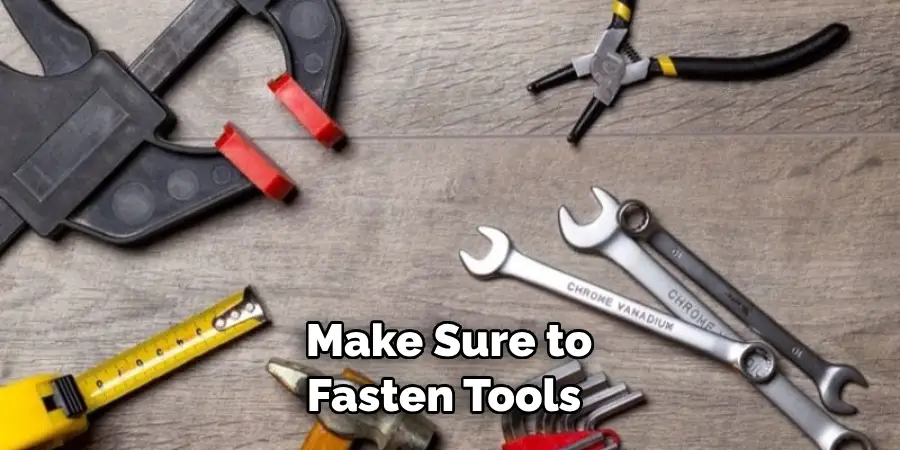
Make sure to fasten tools and materials securely before using them. This will prevent them from falling and causing injuries. It’s also important to store tools properly after use to avoid any potential accidents.
5. Overloading Cabinets
While adding extra height to your cabinets may provide more storage space, it’s important not to overload them with heavy items. This can put a strain on the structure of the cabinets and potentially cause them to collapse.
6. Rushing Through the Project
Take your time when extending the height of your cabinets, and follow instructions carefully. Rushing through the project can lead to mistakes or accidents. Keep a steady pace, and don’t be afraid to take breaks if needed.
7. Neglecting to Check for Levelness
Before attaching new pieces or making adjustments, make sure to check for levelness. Uneven cabinets can affect the overall stability and functionality of your kitchen. While minor adjustments can be made, it’s important to address any major-level issues before completing the project.
8. Not Seeking Assistance
If you’re unsure about a particular step or need help with heavy lifting, don’t hesitate to seek assistance from a friend or family member. It’s always better to have an extra set of hands and eyes for added safety and support.
By avoiding these things, you can ensure a safe and successful cabinet height extension project. Remember to always prioritize safety and take necessary precautions while working on any DIY project. Now go forth and give your kitchen cabinets the extra height they need!
8 Additional Tips for Safe DIY Projects
Apart from the specific safety measures to consider when extending the height of your cabinets, there are also general safety tips that apply to any DIY project. Here are eight additional tips to keep in mind:
1. Start with a Plan
Before starting any project, it’s important to have a clear plan and understanding of what needs to be done. This will help prevent mistakes and accidents. Also, make sure to have all the necessary materials and tools on hand before beginning.
2. Wear Proper Clothing

While it may be tempting to work in comfortable clothes, it’s important to wear appropriate clothing for DIY projects, such as closed-toe shoes and long pants. This will protect your body from potential injuries or accidents.
3. Use the Right Tools
Using the right tools for the job is crucial for safety and efficiency. Make sure to use tools that are appropriate for the task at hand, and always follow instructions and safety precautions when using power tools.
4. Take Precautions with Electricity
When working with electricity, make sure to turn off power sources before making any adjustments or repairs. If you’re not familiar with electrical work, it’s best to hire a professional for added safety.
5. Keep Children and Pets Away
DIY projects can be exciting for children and pets, but for their safety, it’s important to keep them away from the work area. Use caution tape or barriers if necessary to prevent them from getting too close.
6. Stay Focused
Distractions can be dangerous when working on DIY projects, so it’s important to stay focused and alert. Avoid listening to music or using your phone while operating power tools or handling sharp objects.
7. Clean Up as You Go

Keeping a clean work area is not only more efficient, but it also helps prevent accidents. Make sure to clean up any debris or spills as you go and properly dispose of any waste materials. And always remember to put away tools and materials after use.
8. Know When to Call a Professional
While DIY projects can be fun and fulfilling, it’s important to know when a project is beyond your skill level. If you’re unsure or uncomfortable with a certain task, don’t hesitate to call a professional for assistance. Your safety should always come first.
By following these additional tips on how to make kitchen cabinets taller, you can ensure a safe and successful DIY project.
Remember to always prioritize safety and take necessary precautions. Now go forth and tackle that home improvement task with confidence!
Frequently Asked Questions
Are There Any Specific Safety Measures to Consider When Extending the Height of Cabinets?
Yes, some important safety measures include working on a stable surface, taking accurate measurements, wearing protective gear, securing tools and materials, avoiding overloading cabinets, checking for levelness, and seeking assistance if needed.
Can I Wear Anything While Working on DIY Projects?
No, it’s important to wear appropriate clothing for safety, such as closed-toe shoes and long pants. Avoid wearing loose or baggy clothing that can get caught in tools or machinery.
Should I be Concerned About Electricity While Working on DIY Projects?
Yes, always turn off power sources when working with electricity and if you’re not familiar with electrical work, it’s best to hire a professional for added safety. Also, avoid working on electrical projects when there is water present.
What Should I Do if I Don’t Feel Comfortable With a Task During a DIY Project?
It’s important to know your limits and not push yourself too far. If you’re uncomfortable or unsure about a task, don’t hesitate to call a professional for assistance.
It’s always better to prioritize safety over completing the project on your own. Overall, make sure to plan ahead and take necessary precautions while working on any DIY project. Safety should always be the top priority.
Conclusion
Extending the height of your cabinets can be a great way to add more storage space and update the look of your kitchen.
However, it’s important to prioritize safety and take necessary precautions when tackling this DIY project. Remember to work on a stable surface, take accurate measurements, wear protective gear, secure tools and materials, avoid overloading cabinets, check for levelness, and seek assistance if needed.
Don’t forget to follow general safety tips such as starting with a plan, wearing appropriate clothing, using the right tools, taking precautions with electricity, keeping children and pets away, staying focused, cleaning up as you go, and knowing when to call a professional.
By following these guidelines on how to make kitchen cabinets taller, you can ensure a safe and successful cabinet height extension project.

